The psychology of pyjamas: Can the right sleepwear actually help you rest better?
Could switching out that old gym shirt for proper sleepwear improve your rest? Experts weigh in.
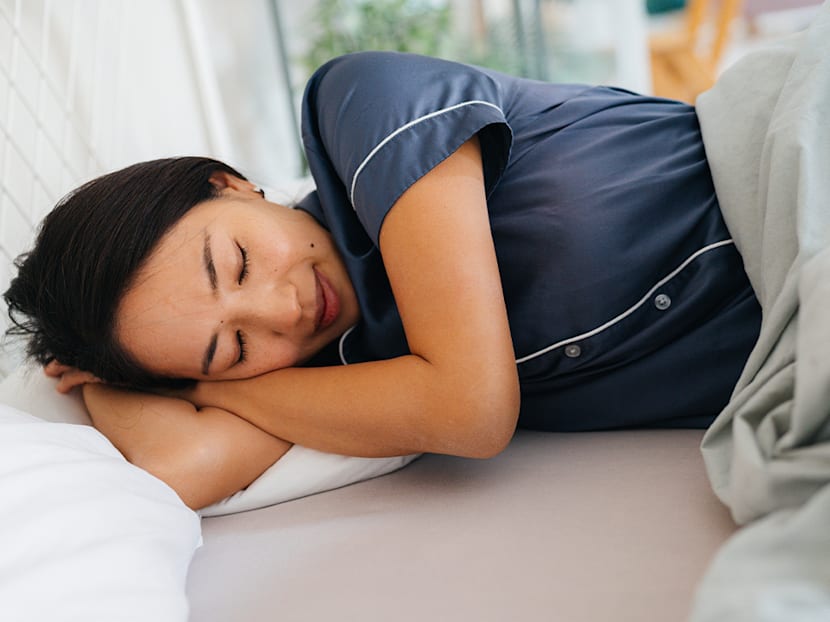
The sleepwear effect. (Photo: iStock)

This audio is generated by an AI tool.
We spend a third of our lives asleep – or at least, trying to. When it comes to improving our rest, we obsess over thousand-dollar mattresses, blackout curtains, and white noise machines. What we actually wear to bed? That’s usually an afterthought.
It shouldn’t be.
What you slip into at night can subtly shape how quickly you unwind, how deeply you sleep, and even how you feel when your alarm goes off.
“Sleepwear itself is rarely the main driver of sleep quality, but it can play a role through pathways like temperature regulation, comfort, and pre-sleep routines,” said Julian Lim, lead sleep psychologist at Somnus Sleep Wellness, a sleep disorder centre.
Nora Lim and Heng Juit Wen, founders of homegrown sleepwear label Selenightco, go further: The right pyjamas do more than keep you covered – they help you feel at home in your body and mind.
THE POWER OF PRE-SLEEP RITUALS
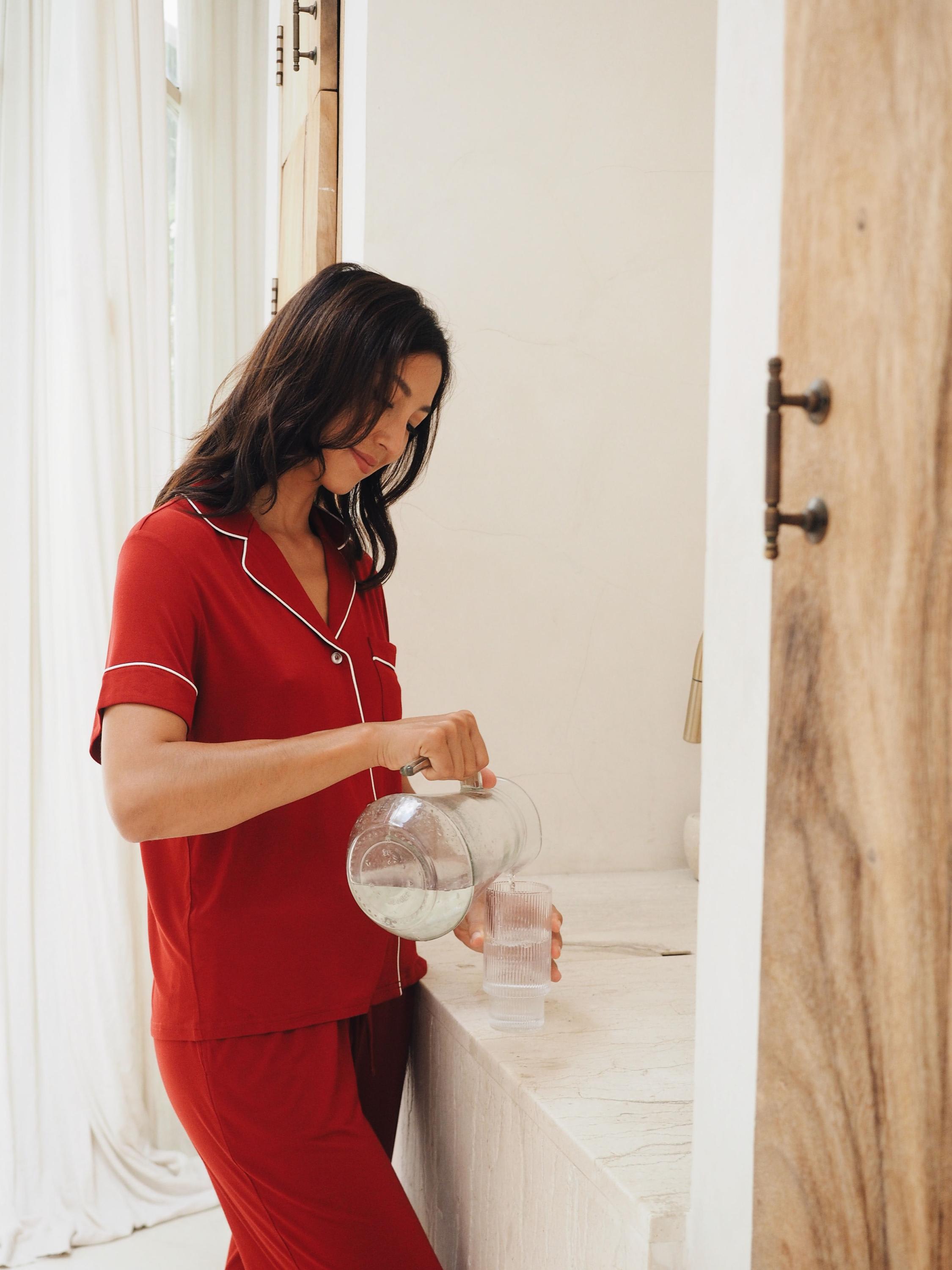
Think about your evening routine. You might dim the lights, brew chamomile tea, or queue up a meditation app. Changing into pyjamas works the same way – it’s a physical marker that signals your day is done.
“Rituals are powerful cues for the brain,” explained Lim. “Changing into pyjamas is a small but meaningful signal that the workday is over, and that the body can shift into rest. Over time, these consistent behaviours create strong associations, helping the brain transition from a state of alertness to one of relaxation."
In other words, when you repeatedly pair an action (putting on pyjamas) with an outcome (sleep), your brain begins to automate the connection. The ritual becomes the trigger.
Changing out of the clothes you worked, cooked, or parented in and into something designed just for rest tells your body, it’s time to wind down.
Selenightco designs with this wind-down ritual in mind. “Our focus is on thoughtful, intentional details and thermoregulating fabrics that help the body and brain shift into rest mode – especially in Singapore’s heat,” said Heng.
For Selenightco’s co-founder Lim, the brand’s origin story is personal. “One morning, I woke up in my husband’s old T-shirt and my own pair of tattered shorts, and thought: There has to be a better way to start the day, one that makes me feel good physically and mentally. Dedicated sleepwear offers a sensory upgrade, and a psychological cue [that it’s time to rest].”
WHY DEDICATED SLEEPWEAR MATTERS
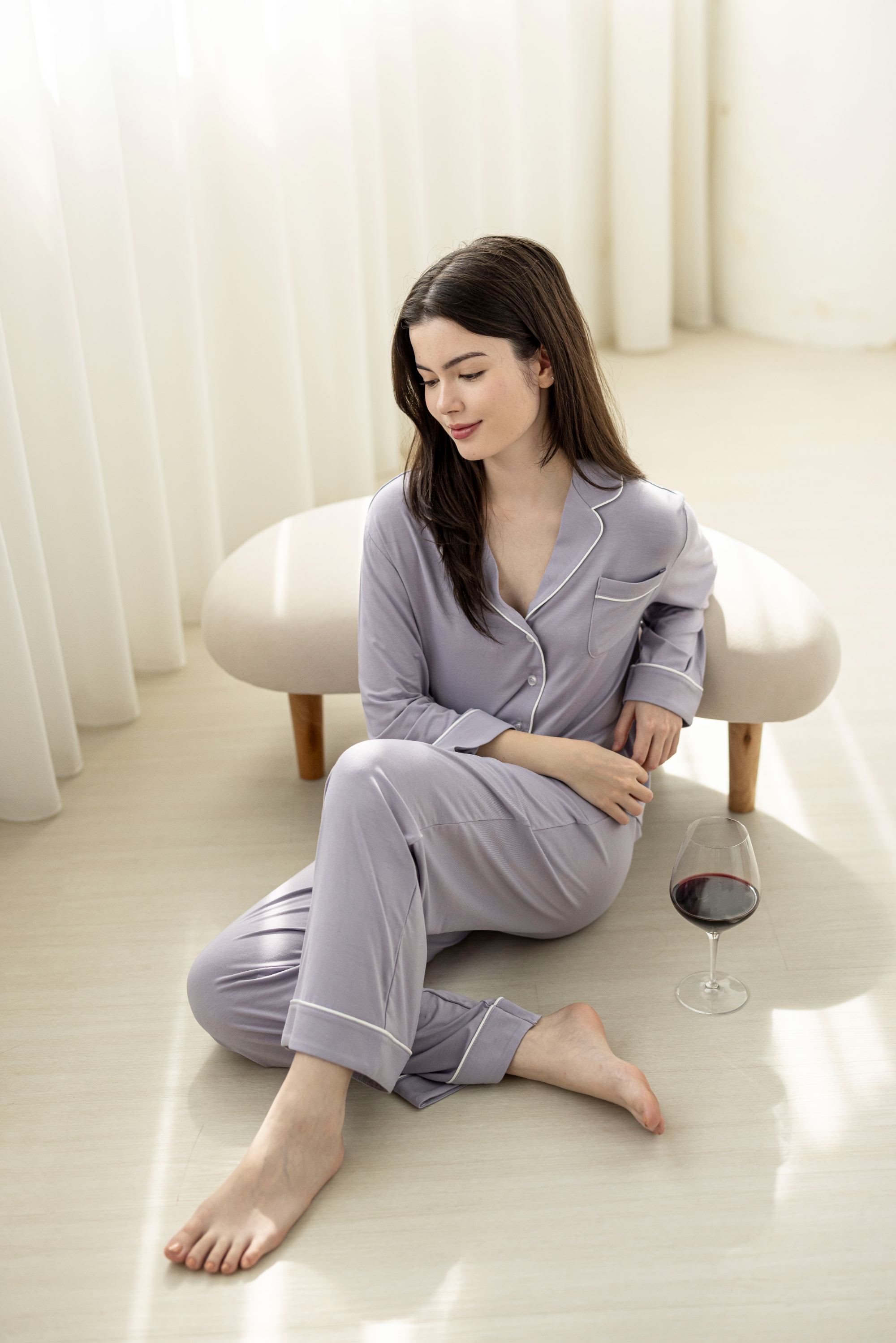
Many of us grew up sleeping in old gym shirts or university hall tees. According to Lim the sleep expert, that's perfectly fine – if it’s comfortable and consistent.
“Not everyone needs special sleepwear,” he said. “Having clothes that you only use for sleeping can help reinforce the mental association between those garments and rest. What matters is consistency and comfort, not how expensive the clothes are.”
That distinction – intention rather than indulgence – is key. As he puts it: “Changing out of the clothes you worked, cooked, or parented in and into something designed just for rest tells your body, it’s time to wind down.”
COMFORT STARTS WITH FABRIC
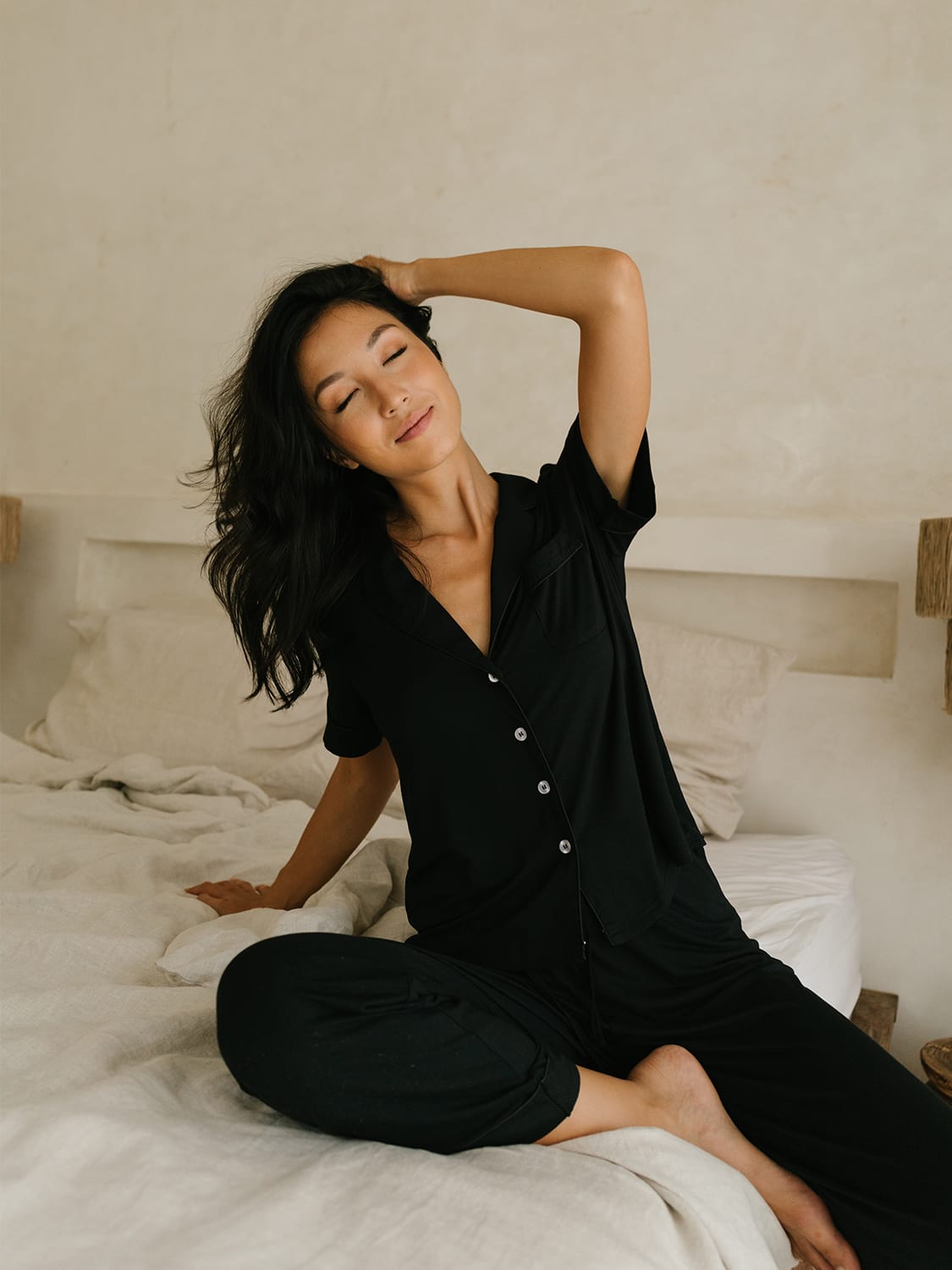
Anyone who’s spent a humid night tangled in clammy sheets knows: Discomfort is sleep's worst enemy.
“Discomfort is a source of micro-arousals, or brief awakenings that fragment sleep,” explained the sleep expert. “Even if you don’t recall them, your sleep quality can be affected. Tight, scratchy, or heat-trapping fabrics can keep the body in lighter stages of sleep and make it harder to achieve restorative deep sleep.”
Your body temperature naturally drops as you fall asleep – it’s part of the biological process that initiates rest. But if your clothing traps heat or doesn’t breathe, it disrupts that cooling process, keeping you in lighter, more restless sleep stages.
This is where fabric choice becomes critical. “It has to be buttery-soft, breathable, and thermoregulating,” said Heng. “In our climate, that means keeping cool and dry in humidity, but still cosy under air-conditioning.”
Discomfort is sleep's worst enemy.
Natural or semi-synthetic fibres such as bamboo, cotton, or lyocell tend to perform best. They wick away moisture, feel soft on the skin, and allow heat to escape. Bamboo, in particular, has natural temperature-regulating properties and tends to stay cool to the touch even in humid conditions.
Polyester blends, common in fast-fashion sleepwear, do the opposite. They trap humidity against your skin and hold heat. “They also hold on to odour much more than natural fibres. While they can work well for activewear, they’re not our first choice when it comes to sleepwear,” shared Selenightco’s Lim.
DETAILS MAKE A DIFFERENCE
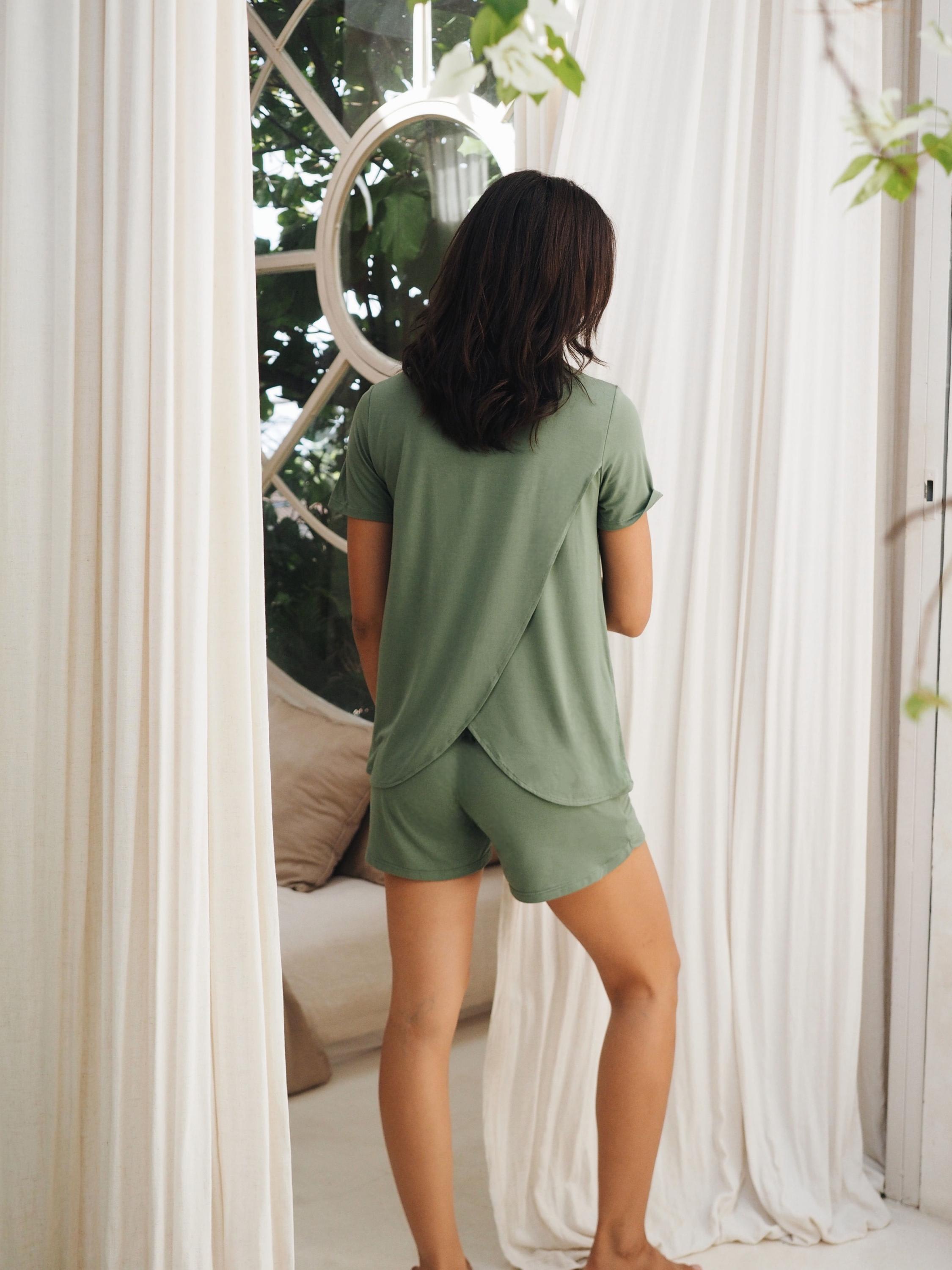
While fabric does most of the heavy lifting, design details can quietly sabotage comfort.
“One of the first things we changed was switching to printed labels instead of sewn-on tags, so there’s no scratching or irritation as you move through the night,” she said. “Comfort begins with removing those little distractions that can get in the way of deep rest."
It sounds minor, but think about it: A scratchy tag at the back of your neck, a tight elastic waistband cutting into your stomach, a seam that rubs against your shoulder. While these are not dramatic discomforts, they’re enough to keep your nervous system slightly activated, preventing you from fully relaxing into deep sleep.
Other thoughtful touches make a difference in Selenightco's designs. Breathable details like ventilated back panels, along with relaxed fits, looser cuts, side vents and soft waistbands, improve airflow and allow freedom of movement – helping the body maintain an even temperature through the night.
Essentially, the goal is for your sleepwear to feel almost invisible. You shouldn’t be aware of what you’re wearing once you’re in bed.
THE MIND-BODY CONNECTION
The relationship between sleepwear and rest operates on two levels.
“Physically, clothing affects body temperature and comfort, which directly influence sleep depth. Psychologically, it becomes part of the set of cues and rituals that tells your mind it’s time to switch off. Together, these two factors create a reinforcing loop: The body feels good, and the brain is primed for rest,” said the sleep expert.
Physically, clothing affects body temperature and comfort, which directly influence sleep depth.
There’s something else at play too: The psychology of investment. “Sometimes the act of investing in sleep sends a message that it’s valuable,” he said. “If you feel good in what you wear, it can foster a more positive mindset toward rest, and that psychological shift can make it easier to approach bedtime with intention rather than resistance.”
In recent years, sleepwear has shifted from afterthought to self-care staple. “After COVID, there’s been a real shift in how people think about sleepwear and ‘home wear’ in general,” said Selenightco’s Lim.
“With more of us working from home, customers are now looking for pieces that do double duty – comfortable enough to lounge in, but polished enough for a Zoom call or a quick step out. It’s no longer just about what you wear to bed; it’s about investing in home wear that supports both wellbeing and lifestyle.”
BUILDING A HEALTHIER RELATIONSHIP WITH SLEEP
Let’s be clear: Clothing alone won’t fix chronic insomnia or compensate for doom-scrolling until 2am.
“Sleepwear is not a magic bullet,” said the sleep expert. “It’s a low-effort way to reinforce healthy routines. Think of it as part of a larger ecosystem that includes your bedtime rituals, and your mindset toward rest.”
But when aligned with good habits, he adds, the right clothing helps create the conditions for deep, restorative rest.
He emphasised that sleep hygiene – consistent sleep and wake times, stress management, and screen discipline – still matter most. “Even the most comfortable sleep environment is not going to give you a restful night in bed if your mind is racing at a mile a minute,” he said. “If you consistently find it difficult to fall or stay asleep despite practising good sleep hygiene, it’s advisable to seek a professional for help.”
HOW TO CHOOSE (AND CARE FOR) YOUR SLEEPWEAR
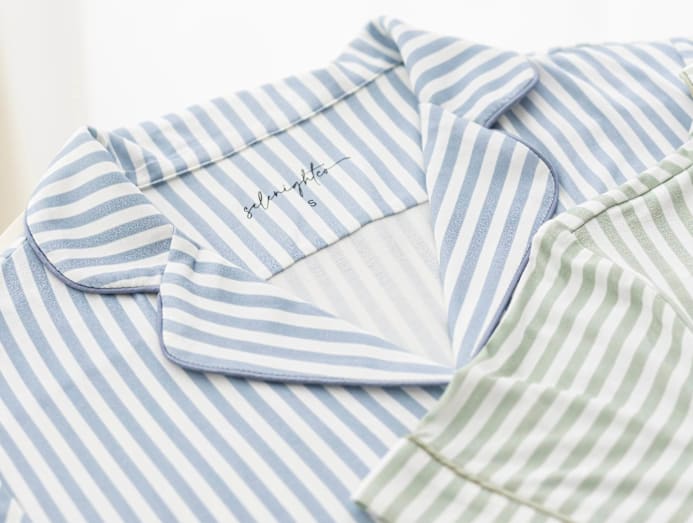
So what should we actually look for when buying pyjamas? The experts’ advice converges on a few simple principles:
1. Prioritise breathability and fit
Choose natural or moisture-wicking fabrics that keep you cool, and looser silhouettes that don’t cling or pinch.
2. Keep it clean
“In Singapore’s humidity, washing pyjamas every one to two wears is best,” said Selenightco’s Lim. “If you sweat at night or skip a shower before bed, wash daily.”
3. Treat them gently
Heng recommends cool water, mild detergent, no bleach or softeners, and air-drying in the shade to keep sleepwear soft and drape-y.
4. Reserve them for sleep
The sleep expert’s behavioural tip: “Try to wear that clothing for sleeping only. That way, putting it on becomes a clear cue for your brain to unwind."






